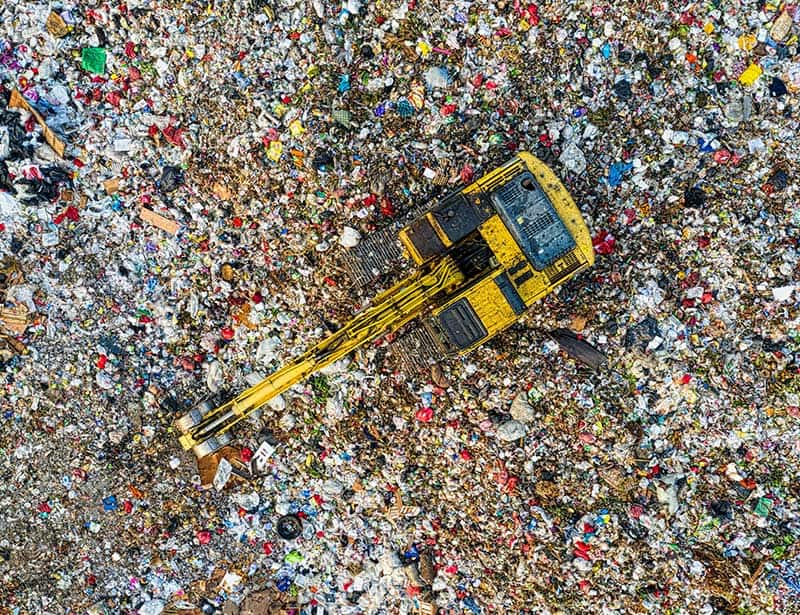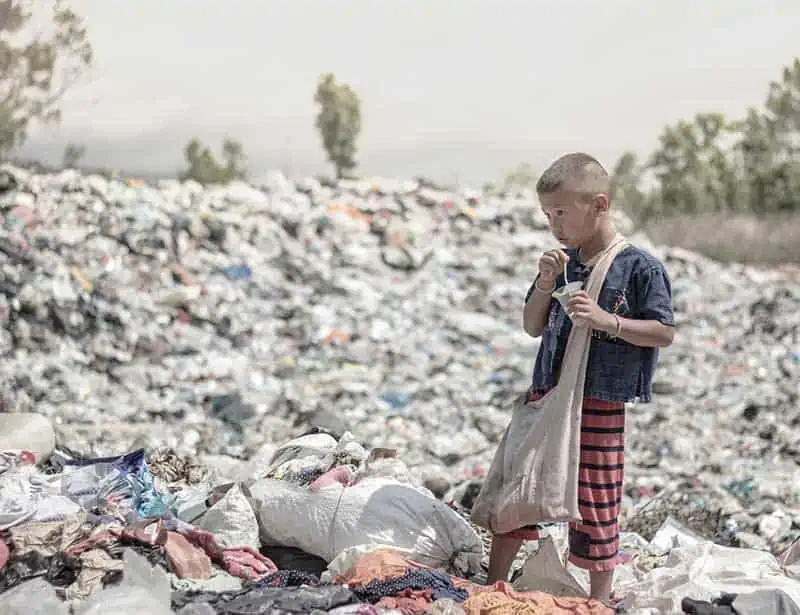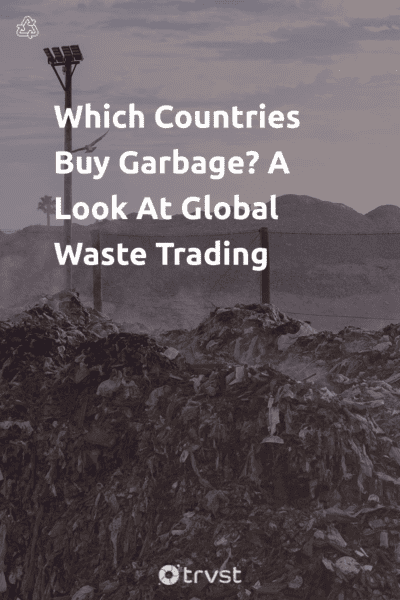Which Countries Buy Garbage? - The Global Waste Trade
The world produces so much waste because of the industrialization of societies and economies at large. There are disparities between a developed country and a developing country. Countries that can’t manage their solid wastes sell their trash to other countries for disposal.
Developing countries can sell their trash to make more money and improve their economy. While developed countries primarily sell to developing countries because some have recycling facilities that take care of the waste, which they can’t affordably process themselves. And these importing countries stand to gain a lot more profit.
Read on as we discuss the international trade of waste and its impact on the environment and society.
What is global waste trading?

This is an international waste transaction between two or more countries for disposal and recycling. Waste is unavoidable due to the industrialization of economies worldwide, and our daily lives are packed full of consumable products and single-use packaging. The world at large generates billions of tonnes of waste. To manage waste, countries introduced the waste trading scheme in the 1970s.
According to the World Bank, the world generated 242 million tonnes of plastic waste in 2016. Researchers predict these figures will increase to 2.2 billion tonnes by 2025.
Read more: 38 Plastic Pollution Facts & Statistics
As developed countries couldn’t handle their high waste production rate, they sold it to poorer countries as a means for them to improve their economy. These emerging countries are the ones that will sort, treat, dispose and recycle the waste accordingly.
Between the years 1988 to 2016, the world’s waste trading was worth $98.3 billion. China was the largest importer of plastic waste among other importing countries, while EU-28 countries were the largest exporters of the world’s waste.
According to the European Union database, EU countries’ exported waste increased to 33 million tonnes in 2021. That is an increase of 74% since 2004. Also, the importation of waste from countries outside of the EU countries by EU countries increased by 11%. The 27 member states of the European Union export waste to over ten counties. Here’s a list of the countries in order of the country that receives the most waste:
- Turkey
- India
- Egypt
- Switzerland
- United Kingdom
- Norway
- Pakistan
- Indonesia
- United States
- Morocco
Turkey is the largest importer of solid waste from the EU, with ferrous metals being the most imported waste product. Turkey imported 13.1 million tonnes of ferrous metals in 2021.
Paper wastes were the second most exported waste from the EU. India imported 1.2 million tonnes of paper waste, Indonesia imported 0.9 million tonnes, and Turkey imported 0.4 million tonnes of paper waste2.
Countries that accept plastic waste imports
The world exports 200 billion tonnes of plastic waste. The major exporting countries of plastic scraps and waste are the United States, Germany, and Japan. These industrialized countries exported about 32% of the global plastic waste from 1988 to 2020. Other countries that export plastic waste are the United Kingdom, Netherlands, France, Belgium, Italy, Mexico, and Slovenia.
Here is a list of the plastic-importing countries from 2010 to 2020:
- Hong Kong
- Malaysia
- India
- Vietnam
- Turkey
- Canada
- United States of America
- Indonesia
- Germany
- Republic of Korea
- Thailand
- Netherlands
- Switzerland
- Mexico
These countries undertake solid plastic waste imports to improve their economy and reduce plastic pollution. The recycling industry of these poorer nations can recycle other countries' plastic waste into new products instead of creating plastics from scratch, harming the environment—the list above shows that China was the primary importer of plastic scrap and plastic waste.
Hong Kong is the entry port to China, with over 60% of the plastic waste entering China via its ports. China previously imported about 55.7% of the world’s plastic waste. They import up to 8.88 million tons of plastic waste yearly because they are the largest plastic recycling industry in the world.
The USA, Japan, and Europe 7, respectively, exported 77.9%, 87.6%, and 57.5% of their plastic waste to China1. Plastic waste contains six plastic products: polyethylene, polypropylene, polyethylene terephthalate, polystyrene, polyvinyl chloride, and other plastics.
China has an estimated cumulative trade value of $57.6 billion, the USA has a cumulative of $5.18 billion, and the Netherlands has $2.4 billion. India, a lower-income country, has a cumulative of $1.2 billion.
However, China banned the importation of plastic and other types of solid waste in 2017 because they discovered that many wealthy countries include hazardous waste in their shipping containers.
These illegal acts go against the stipulations of solid waste management, making it impossible for China to reach its recycling targets. Let’s examine China’s ban and its impact on international waste management and foreign countries.
China's ban and its Impact
As mentioned earlier, China previously imported over 8 million tonnes of plastic waste annually. The plastic imports should be recyclable types of plastic waste. However, many of these plastic waste exports constitute hazardous waste, are not disposable, and are non-recyclable. It led to China burying and mismanaging 70% of the plastic imported from foreign countries.
Further, it increased China’s plastic pollution levels, including the plastic waste generated locally. For instance, for decades, e-waste has caused severe environmental and health problems in Guiyu3, China.
So, China created a ban titled Prohibition of Foreign Garbage Imports: the Reform Plan on Solid Waste Import Management on July 24, 2017. It banned 24 types of solid waste, including plastic waste.
Being the largest importer of recyclable waste, the abrupt import restrictions had massive impacts on many countries. It disrupted the waste trading industry. It affected the wealthy nations that export garbage and other receiving countries of solid plastic waste.
Changing the nature of the global waste trade
The international trade of waste flow dropped by 45%. Japan's export rates fell by 39.2%, USA's dropped by 54%, and the seven groups of European countries decreased by 30%.
Although the China ban didn't completely stop all importation, as some western countries got their plastic waste through illegally, it paved the way for other Asian countries to improve their import rates.
Thailand, South Korea, Vietnam, Philippines, and Malaysia saw an increase in their import rates - imports from the United Kingdom increased to 46.5%, Japan increased to 55.9% from 4.34%, while the UK, Spain, Italy, Germany, France, Netherlands, and Belgium increased from 6.1% to 33%.
However, the receiving countries faced the same problems that China encountered. They couldn’t meet their recycling targets because most of their plastic waste imports were hazardous waste. Soon, other Asian countries put restrictions in place to reduce the plastic waste imported to their countries as it's only causing further plastic pollution.
As these developing countries placed restrictions on their global plastic waste imports, there was a significant reduction in the exportation from many wealthy countries. It also led to the reevaluation of waste management procedures. Now, developed countries will treat, dispose, and recycle a higher percentage of their waste, and the rest will go to other countries that accept imports of plastic.
Also, developed and emerging countries are improving their waste management infrastructures. So they can treat their hazardous waste and recycle recyclable waste without sending it to other countries. At the same time, others are seeking to minimize the waste flow and develop zero-waste resource management strategies.
Plastic Waste Trade Regulations

There are two sets of regulations governing plastic scrap and waste export and importation. The first is a global regulation that applies to all countries, while the other regulations are the ones set by other countries to supplement the global regulation.
The Basel Convention
The Basel Convention is an international treaty created in 1989 and enforced in 1992 to prevent the transportation of hazardous waste between countries. As of 2021, 53 states and the European Economic Community signed the Convention.
The Convention stated that hazardous waste trade could only occur with the consent of the importing country - the prior informed consent (PIC), also known as the “notice and consent regime.” It also stated that a country could not export hazardous waste to a receiving country it knows doesn’t possess the infrastructure to handle it.
The aims of the Basel Convention were:
- To reduce the production of hazardous waste and encourage correct disposal practices
- To restrict waste trade between countries
- To create a regulatory system for some cases of permitted cross-border waste trades
The Notice and Consent Regime contained four requirements. They are:
- The notification from the exporting country
- The consent and allocation of a transport document by both parties
- The movement of waste across borders
- Waste disposal confirmation
The purpose of the procedure is to ensure that the countries in question consent and dispose of the waste without harming the environment or human health. It gives importing countries the right to refuse the importation of harmful waste. So, countries that forcefully export hazardous waste by shipping falsely labeled waste containers are committing the crime of illegally trafficking waste.
Other regional, bilateral, and multilateral regulations
- EU- the Waste Shipment Regulation
- Africa- the Bamako Convention
- African, Caribbean, Pacific- Lome IV Convention
EU- the Waste Shipment Regulation
The European Union adopted the new waste shipment regulation on 17 November 2021. The regulation sets stricter rules regarding the reuse and recycling of waste within its internal market. It addresses the division regarding the identification required for specific waste streams and aims to stop the exportation of waste that the European Union finds challenging. Also, it addresses the illegal shipments of waste more effectively4.
Africa- the Bamako Convention
The Bamako Convention happened due to Article 11 of the Basel Convention. The 12 nations of the African Union came together in January 1998 to create the convention. It encouraged all parties to join bilateral, multilateral, and regional agreements regarding hazardous waste as it will help achieve the convention's aims. The Bamako Convention has a stricter stance regarding the import ban on hazardous waste, and it doesn’t make exceptions.
African, Caribbean, Pacific- Lome IV Convention
African, Caribbean, and Pacific states agreed in 1975 to create the Lome Convention. The purpose was to stop exporting hazardous waste from European countries to African, Caribbean, and Pacific states.
The Impact of Global Waste Trade on the Environment
The transportation of toxic waste across borders has a negative effect on the environment, especially in a case whereby the exporting country illegally transports hazardous waste to emerging countries that lack proper recycling and disposal infrastructures.
Since China placed its ban on imported plastic waste and returned plastic waste exported to the country, most countries could not effectively recycle some of their waste. They're unable to recycle because they need proper plastic recycling procedures, and it often proves cost prohibitive. Instead, they send the waste to landfills, leading to high land pollution levels.
The plastic wastes start leaking toxic chemicals into the soil ecosystem, and microplastics contaminate the food chain and water sources of humans and animals.
Also, there's the problem of illegal recyclers that import waste illegally into the country. These people avoid paying for properly disposing of hazardous waste, so they burn them. Burning these toxic waste products leads to the deterioration of the ozone layer as it releases harmful greenhouse gasses into the atmosphere and causes air pollution.
Instances like this have led to the sickness of the people living in such an environment. For instance, the residents of Jenjarom, Malaysia, suffered mass headaches, respiratory problems, developed skin allergies, and other health issues.
There's also the problem of forest and environmental fires that starts because the recyclers were not monitoring the disposal of the waste products.
Conclusion
The international trade of waste is instrumental in boosting various countries’ economies. Countries support each other by buying and selling trash to recycle and dispose of it. However, stricter measures need to be in place for the environment's safety, as some countries dump toxic wastes in other countries illegally.
| 1 |
Wen, Z., Xie, Y., Chen, M. et al. China’s plastic import ban increases prospects of environmental impact mitigation of plastic waste trade flow worldwide. Nat Commun 12, 425 (2021). https://doi.org/10.1038/s41467-020-20741-9 |
| 2 |
Environmental Investigation Agency, (September 2021). The Truth Behind Trash: The Scale and Impact of the International Trade in Plastic Waste. |
| 3 |
Tan Q, Li J, Boljkovac C. Responding to China's Waste Import Ban through a New, Innovative, Cooperative Mechanism. Environ Sci Technol. 2018 Jul 17;52(14):7595-7597. doi: 10.1021/acs.est.8b01852. Epub 2018 Jul 2. PMID: 29965746. |
| 4 |
European Commission, Proposal for a new regulation on waste shipments, 17 November 2021 |
Jen’s a passionate environmentalist and sustainability expert. With a science degree from Babcock University Jen loves applying her research skills to craft editorial that connects with our global changemaker and readership audiences centered around topics including zero waste, sustainability, climate change, and biodiversity.
Elsewhere Jen’s interests include the role that future technology and data have in helping us solve some of the planet’s biggest challenges.

